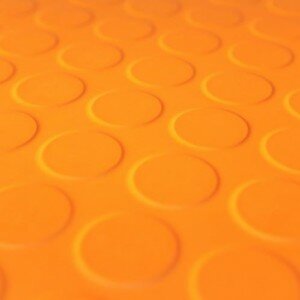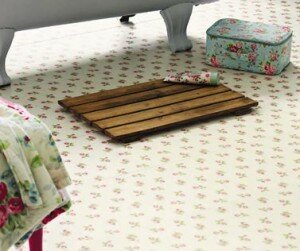
Which type of bathroom floor covering is best?
Posted on 01. Jun, 2011 by Charlotte Laing in Design Tips
The days of mouldy pink carpet in bathrooms may be long gone, but if you’re anything like me you’re still not 100% sure what floor covering to choose.
The thing is, the bathroom is a tricky environment – it’s damp and gets a lot of use. You need to find a floor covering that’s up to the job.

Which flooring would look best with the Victoria Bath from BathEmpire?
Carpet is out, for the obvious reason that it will start rotting and smelling if it’s allowed to get wet too often.
Wooden flooring, while lovely in the rest of your house, is also not brilliant for bathrooms because splashes from the shower, bath or sink can cause it to swell and warp.
So what are the options available?
The first thing that springs to mind is tiling, and this is the option that most of us actually go for in the end.
Personally I’ve opted for a slate-effect ceramic tile in my small bathroom and I’m really pleased with the look.
Tiles have lots of advantages – they’re waterproof, easy to clean, durable and are available in a vast array of shapes, sizes, colours and finishes.
If you’re thinking of going for tiles, check the packaging or ask somebody whether they are suitable for use on the floor. Some are only recommended for walls as they’re not tough enough for the wear and tear of being walked on.
Porcelain tiles are typically more durable that ceramic ones, but are apparently harder to cut. Before you buy, it might be worth talking to your tiler about the pros and cons of each, and how much the labour will cost for a various different tiles.
Prices for tiles can vary widely, but you can expect to pay upwards of about £10 per sq m.

Rubber stud flooring from The Rubber Flooring Company
I’ve noticed in interior magazines lately that there’s a trend towards having rubber flooring in bathrooms.
It’s easy to see why it’s taken off… it’s soft, warmer under-foot than tiles, non-slip, easy-to-clean, waterproof and very hard-wearing.
You can buy it in smooth designs or with a stud effect. We love the range of colours and designs available from The Rubber Flooring Company.
It’s pricey though. You will usually pay around £40 per sq m. It’s also a very modern, utilitarian look, so it might not suit you if you want a traditional bathroom, or something vintage-inspired with a roll-top bath.
If this is out of your budget, then you can achieve a similar look with vinyl. It’s come on in leaps and bounds since the 80s when you might remember it being something that stained easily and peeled up at the edges.
Nowadays you can buy quite hard types of vinyl which are durable enough for bathrooms and are wipe-clean. You do need to be careful about getting vinyl too wet though, and you certainly shouldn’t leave water lying around on the surface.
Plus, you have to lay vinyl on a completely flat surface, which may mean you have to have your floor repaired before laying it.

Cath Kidston vinyl for Harvey Maria
You can pay as little as £5 per sq m but the really funky, hard-wearing designs tend to be more like £40 per sq m (like this darling floral Cath Kidston design for Harvey Maria – left – which is £39.95 per sq m).
Other options include lino – made from natural materials but susceptible to tearing; and stone – which is very stylish and looks luxurious but is expensive and will need sealing if it’s porous.
Which flooring do you think is best for use in bathrooms?
We’d love to know what you’ve used and whether you’re happy with the result.
